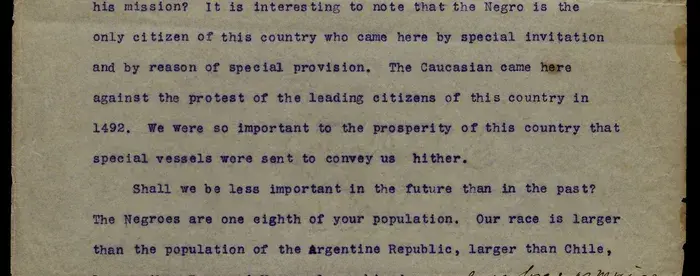Led by: Prof. Nikki Brown (University of Kentucky)
Course Number: AMHI 677
Semesters: Spring 2024
Image: Address of Booker T. Washington, principal of the Tuskegee Normal and Industrial Institute, Tuskegee, Alabama, before the Hamilton Club, Chicago, 1896 (The Gilder Lehrman Institute, GLC07934)
